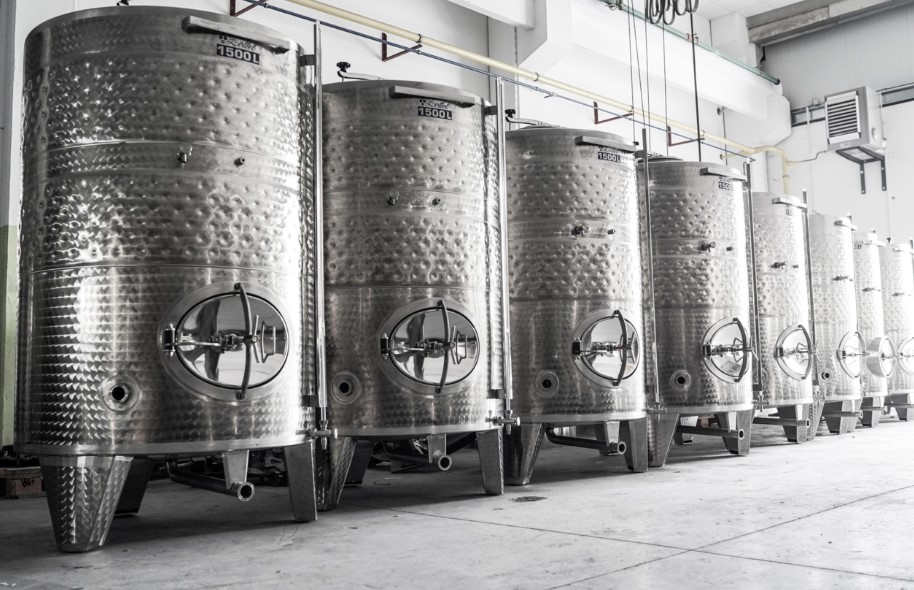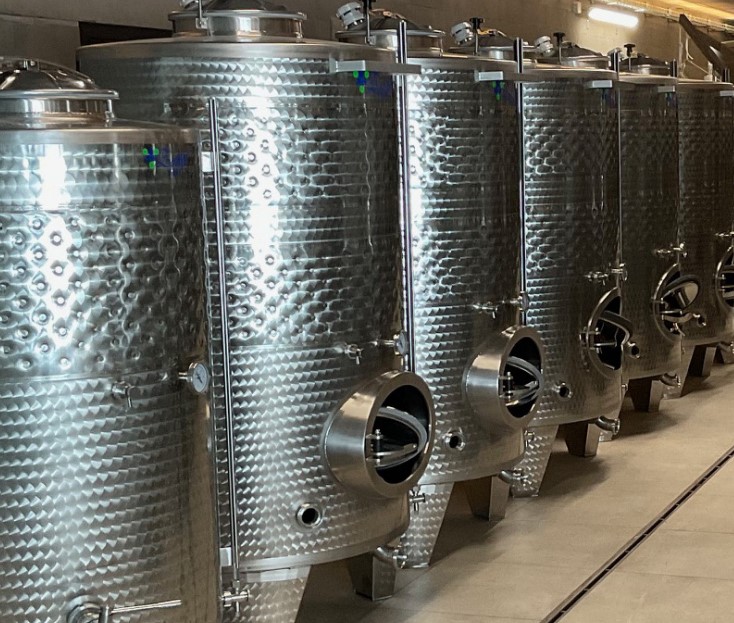In the realm of home winemaking, stainless steel wine tanks have become a popular choice, primarily due to the convenience they offer to enthusiasts. Given the annual opportunity to embark on the winemaking journey with fresh grapes, the effort required to produce 50 gallons of wine is not significantly more than that for 5 gallons. This efficiency is especially apparent when utilizing a single container for storage, eliminating the hassle of managing multiple carboys.
Stainless steel emerges as a preferred material for its ease of maintenance and dual functionality in both fermentation and aging processes. The dominant vessels for aging become stainless steel tanks or oak barrels, each catering to distinct preferences.

Table of Contents
Diverse Styles: Variable Volume Tanks and Sealed Tanks
Stainless steel tanks come in two primary styles, catering to the varied needs of home winemakers: Variable Volume Tanks (also known as Variable Capacity or Floating Lid Tanks) and Sealed Tanks. The versatility of Variable Volume Tanks lies in the adjustable lid, which can be positioned at any level by inflating an inner tube-like bladder encircling the rim.
This flexibility accommodates winemakers working with varying liquid volumes, a significant advantage for those dealing with fluctuating lot sizes from year to year. However, the potential drawback of these tanks lies in the seal quality of the clear vinyl lid bladders, which may pose a risk of oxidative damage to the wine. Notably, this concern is addressed in certain tanks through the use of upgraded White Rubber gaskets, ensuring a reliable seal and mitigating the risk of undesirable wine oxidation.
Sealed Tanks: Fixed Volume and Oxygen Protection
Sealed Tanks, also known as Fixed Volume tanks, differentiate themselves by lacking the Variable Volume lid feature. To preserve the wine inside from the detrimental effects of oxygen, these tanks must either be entirely filled or purged with inert gas. Some winemakers opt for Sealed Tanks, often influenced by personal experiences or anecdotes from their peers regarding issues with Variable Volume tanks. While these tanks offer protection against oxidation, a significant drawback is the requirement for either a sufficient quantity of wine to fill the tank or the availability of an inert gas system for flushing.
Flat Bottom vs. Conical Bottom: Configurations and Considerations
The configuration of wine tanks extends beyond the choice between Variable Volume and Sealed; it also involves selecting between Flat Bottom and Conical Bottom designs. Flat Bottom tanks, as the name suggests, have a straightforward flat base. While these tanks are cost-effective, they come with a limitation – complete drainage is not possible through the bottom valve, similar to the constraints seen in brewing kettles. On the other hand, Conical Bottom tanks, elevated on legs, boast two ports at the base: one for racking and another for total drainage.
Winemakers typically utilize the higher Racking Port for racking, while the lower Drainage Port facilitates the removal of lees and sediment. Both Variable Volume and Sealed tanks offer options for either Flat Bottom or Conical Bottom configurations. It’s worth noting that Flat bottom tanks are practical up to a capacity of about 1000L (250 gal); beyond this, the advantages of a conical bottom tank become apparent.
